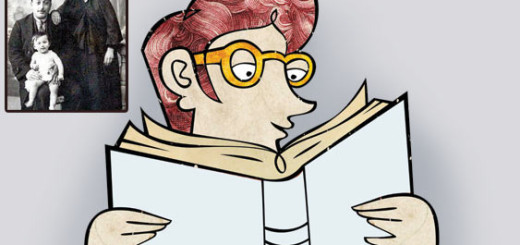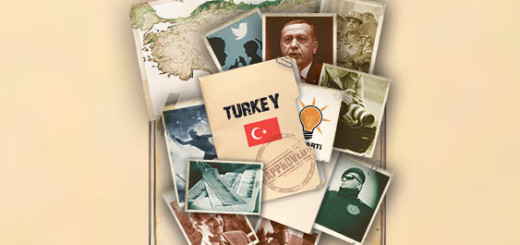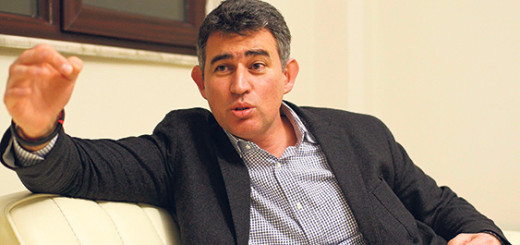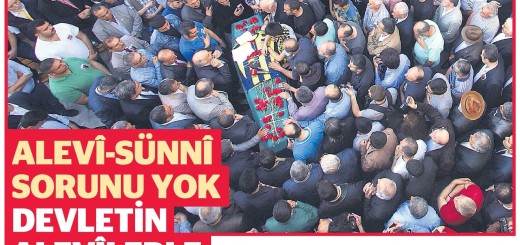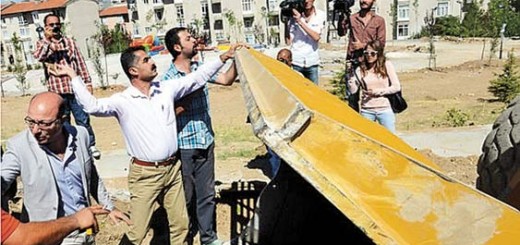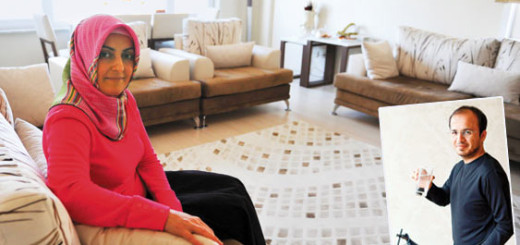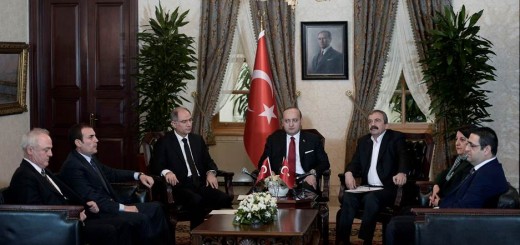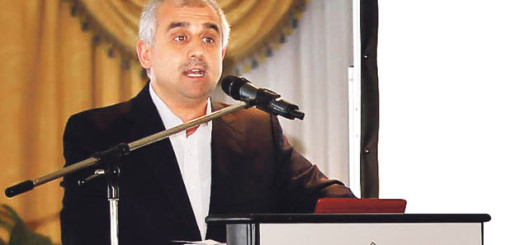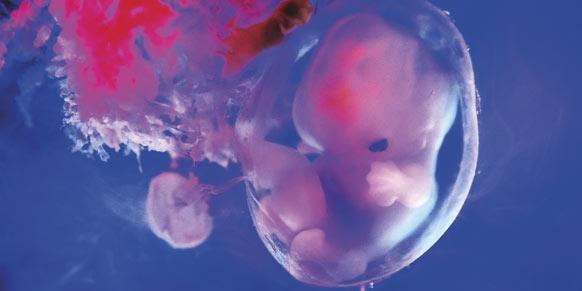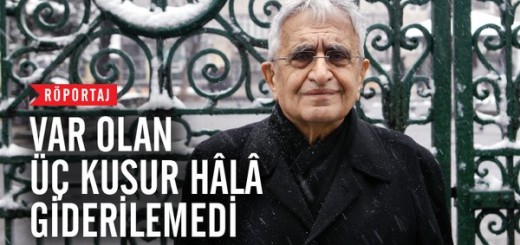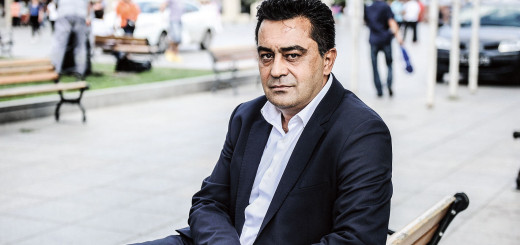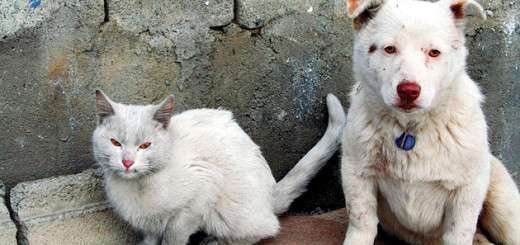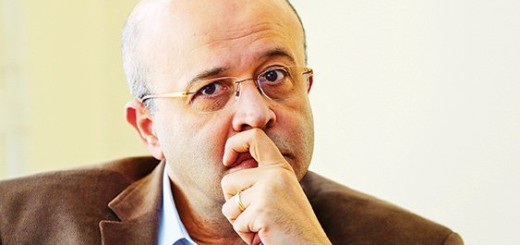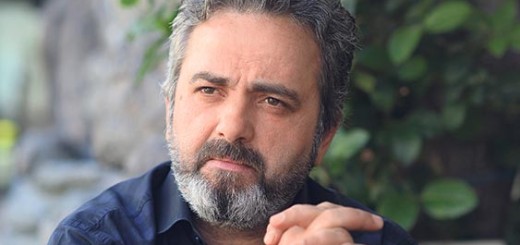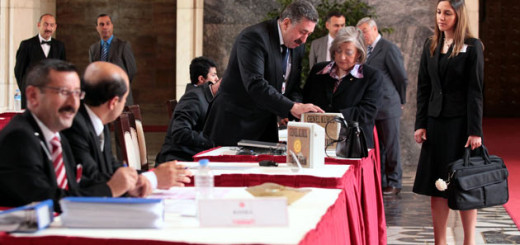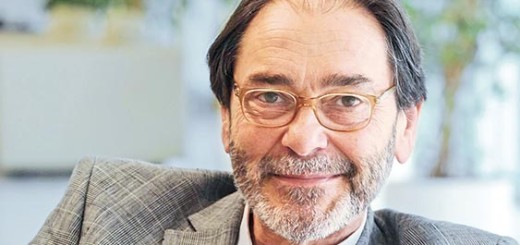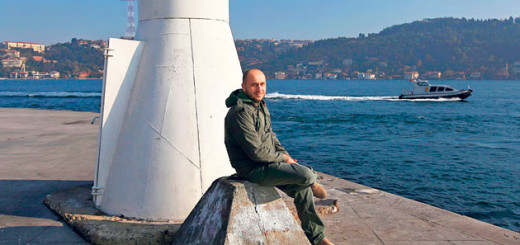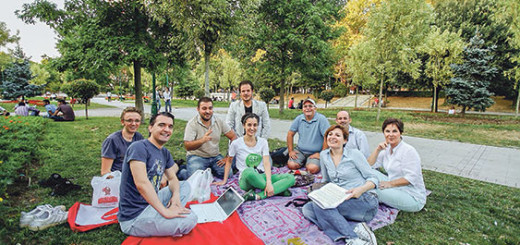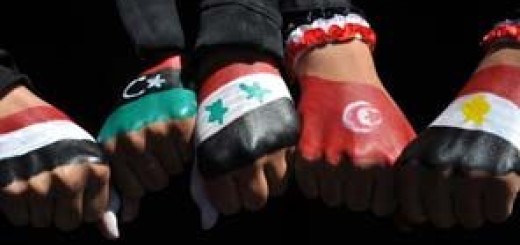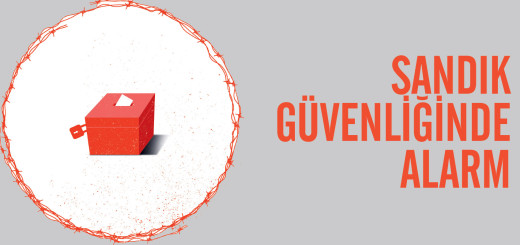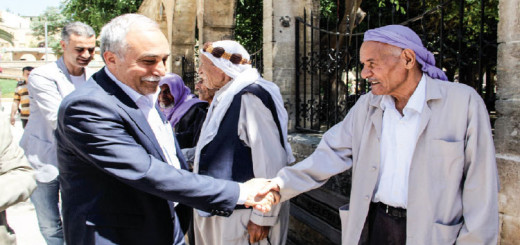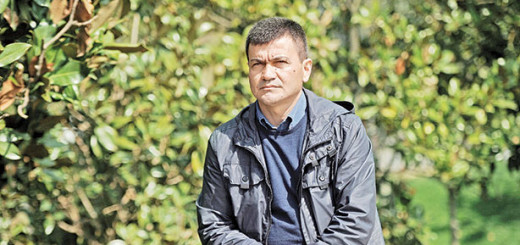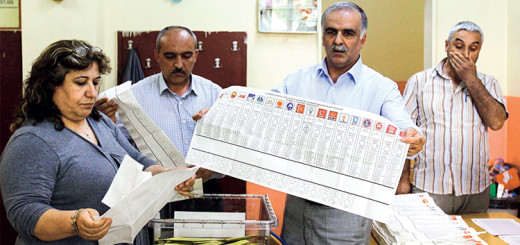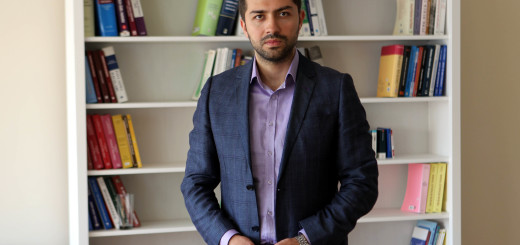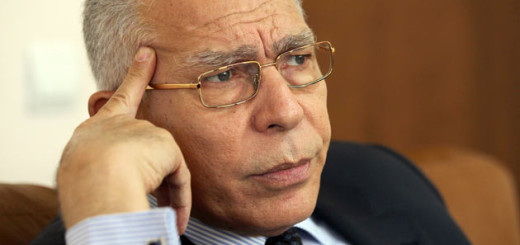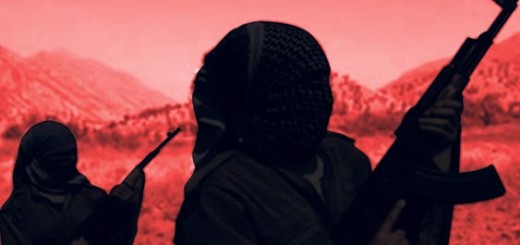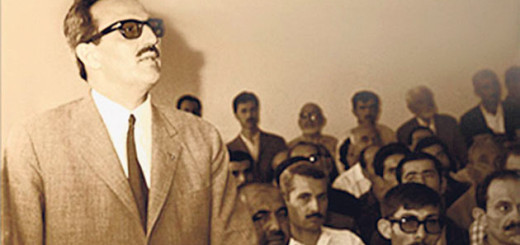
Bünyamin Köseli (Photo: Sunday’s Zaman, Üsame Arı)
“Çelik Kapılar Ardındaki Örgüt DHKP-C” [The Organization Behind Steel Doors: Revolutionary People’s Liberation Party/Front (DHKP/C)] is a book that is the product of long years of efforts by journalist Bünyamin Köseli. In his book published by Ufuk Publishing House, Köseli explains the history, organizational structure and current state of the DHKP/C. Köseli gave Sunday’s Zaman an interviewnot only about his book, but also about a suicide bomber, fehriye erdal — who is the top suspect in the case concerning the murder of businessman Özdemir Sabancı — and many other issues related to the DHKP/C.
You say that in 2012 the DHKP/C launched a new period of activity. What was the organization doing before that date?
It is actually the strategy of the organization to carry out actions at regular intervals. During periods of inaction, militants who are newly recruited to the organization from Turkey are sent to Greece. Seeing itself as a sort of “urban guerrilla organization,” the DHKP/C carries out actions in Turkey at certain intervals. These actions are perceived as the raison d’être of the organization.
Urban guerrillas are supposed to spread propaganda and intimidate the masses by carrying out shocking acts. The organization has a number of special days. These days include the anniversary of the organization’s establishment on March 30, 1994 — this date refers to the conflicts between Turkish soldiers and Mahir Çayan and friends on March 30, 1972 in Kızıldere — as well as the organization’s days of martyrs, such as the raids by the police on April 16-17 and July 12 in the early 1990s. They launch attacks to avenge these raids. The decision to launch an attack is taken by the Central Committee (MK). For instance, the MK may say, “Currently, the organization is going through a difficult process; if we conduct a ‘suicide bomb’ attack, we can overcome this bottleneck.”
It appears that the DHKP/C is concentrating on attacks in the wake of the Gezi Park protests.
The Gezi Park protests constitute a turning point for the organization. During these protests, 10 young people — the eldest being 26 years old — died, and virtually all of them were Alevi. This is a unique opportunity for the organization. The organization has an affiliated legal association called the Revolutionary Alevi Committees (DAK). This organization took on the task of spreading propaganda. To Alevis, it says: “The state cannot protect you. All of those who died in the Gezi Park protests are Alevi. We must take up arms to protect ourselves.” Many youths, including high school students, have been channelized into such legal associations affiliated with the organization. The number of young people attending these associations has skyrocketed since the Gezi Park protests. Many youths attend these associations after school.
But the link between the DHKP/C and the Alevi community existed long before the Gezi Park protests…
There is an important historical process. Alevis were largely rural people before 1950. They were living in the remotest parts of Anatolia. Then, they moved to cities. In the cities, the socialist-leftist winds of the generation of ’68 introduced them to illegal and violent acts. Alevi poets wrote folk songs and eulogies for Mahir Çayan, Yusuf Aslan, Sinan Cemgil, İbrahim Kaypakkaya and Deniz Gezmiş. Alevis expressed themselves within the socialist left wing until the disintegration of the Soviet Union.
In this process, Alevi dedes were otherized. They were labeled “fascist” and beaten and banished from certain villages. For instance, a leftist youth cut off an Alevi dede’s nose, but such incidents are not discussed in public. Dedes didn’t want their youths to take part in street skirmishes or kill other people, but they couldn’t control the community after the migration to cities. Today, leftist organizations continue to otherize dedes…
Are Alevis concerned about being linked to the DHKP/C?
The Alevi community is really seriously uneasy about being perceived as affiliated with the organization. This uneasiness was voiced particularly in 2014. Previously, it was impossible for an Alevi dede to utter such a remark. Reha Çamuroğlu, former deputy from the Justice and Development Party (AK Party), and some dedes made these concerns public. But it seems that Alevis will continue to be perceived as connected to the leftist organization for some time to come. The DHKP/C is particularly active in the neighborhoods dominated by Alevis. They are hand-in-glove. Alevis had a very good human resource. They would raise intellectuals. The organization undermined this. Today, the DHKP/C refers to some 600 dead militants as “martyrs.” About 80 of these martyrs were Alevi. Go visit an Alevi village in Anatolia and you’ll come across several graves of such martyrs.
Is it possible for Alevis to keep their distance from the organization?
As some Alevi youths see the organization as an opportunity, it is hard for the Alevi community to move away from the organization. For years, Alevis have been being denied due support from the state. Their demands about cemevis (cultural and religious centers for Alevis) and the status of dedes have yet to be fulfilled. There is an eight-item list of demands, agreed on by all Alevi groups, but this list has not been implemented.
Former Prime Minister Bülent Ecevit made the same mistake. “First, reach an agreement among yourselves; then, come and demand it from the state,” he had said. But this runs counter to the rules of nature. Is it possible for 15-20 million Alevis to agree on the same demands? Do all rightist conservatives follow the same line? No. This is nothing but the state knowingly keeping the Alevi issue unresolved. This in turn leads to the marginalization of Alevi youths and their view of the DHKP/C as a chance. Thus, it becomes impossible for Alevis to keep the organization at bay. It is the state that pushes Alevi youths into the arms of the DHKP/C.
Many leftist armed organizations around the world have been disarmed or disbanded. Why has this not happened in Turkey?
The main factor in the end of armed struggle around the world was the collapse of the Soviet Union. The fall of the Soviet Union, the integration of China with the capitalist system and the loss in popularity of Maoism have been the death knell for armed struggles around the globe. There are only a few leftist organizations left, mainly in India and Colombia. There are also some small local groups in different parts of the world, but they are not effective. The DHKP/C continues to exist in Turkey largely due to the state’s responses
Do you hold the state responsible for the resurgence of the DHKP/C?
I think I am obligated to say “yes” to this question, given the fact that there are National Intelligence Organization (MİT) agents even in the organization’s central committee. If we had not gone through the 1990s, if we had been better integrated with the West in the wake of the disintegration of the Soviet Union, if the militants had not been tortured in prisons in the 1990s and if they had not been extra-judicially executed in police raids, the militants would not have become so marginalized and they would not have become enemies of the state. Here is what I personally heard from some law enforcement officers, who regretfully related, “We would plant birth control pills and condoms in the bags of female militants.”
This is particularly disgraceful for a woman who was arrested for a political cause. For instance, they did the same to Gülnihal Yılmaz, a medical student and a senior DHKP/C militant. She was the daughter of a colonel and died while on hunger strike in 2002. She had possibly been disgraced by pills planted in her bag.
As far as I understand, the organization was most active in the 1990s. Later, it lost momentum…
This should be evaluated within the special circumstances of 1990s. One of the striking stories in the book is the one about the escape of Dursun Karataş. The National Police Department’s counterterrorism unit sent an urgent note to all the other units 10 days before his escape. At that moment, the İstanbul directorate of MİT stepped in and told Karataş, “If you work with us, we will help you.” At that time, there was serious competition between MİT’s İstanbul and Ankara directorates. “We have recruited [Abdullah] Çatlı, and he is working for us,” the Ankara directorate told the İstanbul directorate. It put on airs, in a sense.
And the İstanbul directorate offered to collaborate with Karataş and Baba Erdoğan, of Turkey’s Workers and Peasants Liberation Army (TİKKO). As far as I know, both agree to work for MİT, but as soon as they escaped, they pulled a trick and cut their ties with MİT. Of course, there have been a number of controversial murders committed by the revolutionary left. The counterterrorism methods employed in the 1990s were replaced with more humane methods in the early 2000s. Police officers in the counterterrorism and intelligence departments started to treat militants as human beings. They developed close ties with the detainees and shared their meals with them. After 2000, torture was banned in the counterterrorism and intelligence units. “You will be fired if you slap a militant in the face,” police officers were told in briefings.
We learn from the book that Karataş had planned to urge police office to violate this ban…
At that time, there were notes exchanged between Karataş and the organization. “The police, i.e., the enemy, is implementing a new strategy. They no longer torture militants. This has significantly undermined the determination of militants,” the organization wrote to Karataş. “Comrades should do everything [they can] to force the enemy [the police] to resort to coercion,” he replied. Torture is more fuel for the organization’s motivation. When a sympathizer is faces police violence during a demonstration, s/he becomes an enemy of the state.
Is the organization expected to launch another attack?
It has recently been disseminating statements about the ministers and their sons who are implicated in the corruption scandal [of 2013]. This rhetoric is unexpected from the organization. Law enforcement officials should be vigilant about this matter. The organization may be working on an assassination plan.
‘I trust first in God and then in the organization’
Why do some people who were once active within the organization refrain from speaking?
Fear. There is a special photograph in the book. I feel sad when I look at it. When you learn more about them and talk to their relatives, your sadness multiplies. Why? That photograph shows Cafer Solgun’s brother Hüseyin Solgun, Dursun and Sabahat Karataş, İbrahim and Sevgi Erdoğan and Bülent UIuer — all founding members of the Revolutionary Left (DEV-SOL) group. For instance, Paşa Güven and Dursun Karataş were close friends. But Paşa Güven was killed by DEV-SOL, which was led by Dursun Karataş. Hüseyin Solgun reportedly refrains from mingling with people. Today, many people specifically avoid any mention of DEV-SOL. An empire of fear has been created.
Aren’t you afraid?
So far the organization hasn’t killed any journalist. They even declare in their own publications: “We have never meddled with bourgeois newspapers and reporters that publish negative things about us and we will never meddle with them.” So, I trust first in God and then in the organization.
‘Can you imagine we’re going to be heroes in an hour’
The attack on the police department’s tourism branch directorate in İstanbul’s Sultanahmet district has brought suicide bombers to the agenda once again…
Regarding that attack, I must say that the police department performed very poorly. Nineteen days have passed and the membership of the woman is still unknown. If she had been a member of the DHKP/C, the organization would have immediately claimed responsibility for it. There are rumors that she might be a member of the Islamic State of Iraq and the Levant [ISIL], and therefore, the authorities refrain from making remarks about it.
Besides, if the former police staff had been there, they would be able to identify the perpetrator not as Elif Sultan Kalsen. Former police officers were so expert in this matter that they knew even the shoe sizes of militants. Counterterrorism is a matter of experience. Those police officers would know the families of militants and the very socio-cultural environment they live in. Since these police officers have been purged, the newcomers have made ridiculous mistakes.
How can a person become a suicide bomber and why? How are they motivated?
The organization has to conduct spectacular, shocking attacks. Suicide bomb attacks seriously influence the members of the organization. To blow up your own body for the sake of the cause is sacred in the eyes of these members.
Suicide bombers are not selected from novice militants. Newcomers first experience police brutality in street demonstrations. Then they are blacklisted and they cannot find a job. They are jailed. In prison, their sense of belonging to the organization is boosted. After a time, they are radicalized and become enemies of the state. Then their ties with relatives are severed. So the organization becomes everything for them. They start to live only for the organization and become ready for any task given to them by the organization.
Being a suicide bomber is the peak of this process and is a sort of heroism for them. Every year they will be commemorated and their photos will be everywhere. This is tempting for them. As I was examining the psychology of suicide bombers, I watched a film titled “Paradise Now.” The dialogue between two suicide bombers was very interesting: “Can you imagine we’re going to be heroes in an hour.” This is what they dream of subconsciously.
Another protest was in İstanbul’s Dolmabahçe neighborhood. Fırat Özçelik, a DHKP/C militant, shouted slogans referring to Berkin Elvan before he was detained.
The social consensus formed in connection with Elvan’s death was influential for conservative groups. In the end, he was a young boy aged 15 and weighing 16 kilograms when he died.
The reference to Elvan by the DHKP/C militant had a negative effect on conservatives. This in turned played into hands of President Recep Tayyip Erdoğan. Indeed, the name of Elvan reminds him of his fear of losing everything during those three weeks of the Gezi Park protests. For this reason, Erdoğan hates Elvan. In his mind Elvan equates to the Gezi protests. This is not a sound state of mind.
Fehriye Erdal is alive and now has a legal residence permit
You say that Turkey didn’t want to accept the extradition of Erdal to Turkey. Why wasn’t Erdal taken by Turkey? Where is she now?
Erdal lives in a Belgian town, a few kilometers from the border with the Netherlands. Turkey deliberately refrained from accepting her. When she was apprehended in Knocke Heist in 1999, the Belgian authorities told the Turkish authorities: “We will extradite her, but we must have a request. Send us a letter explaining that she was implicated in a major murder in Turkey with criminal reports of guns and camera images.” The Belgian authorities noted that the letter should be concise and not contain any reference to any organization. What happened next? The National Intelligence Organization (MİT) sent a huge folder to the Belgian authorities. This dossier contained documents about the establishment of the DHKP/C, their acts and their militants, etc. Can you say this move was well meaning? If we had requested the extradition of Erdal for abetting a murder, we had already taken her.

